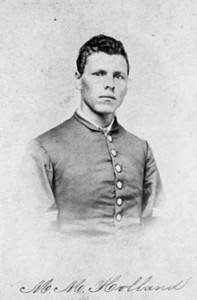How Alvin Ailey’s ‘Revelations’ Has Helped Me Find My Way Back to Texas
While quarantined and away from home, I keep coming back to the late Texan choreographer’s works—which are newly available to watch online.
Photo: Alvin Ailey dancers perform in the “Move, Members, Move” section of Revelations, in 2011. (Earl Gibson/AP)
(Texas Monthly) One warm spring day in the late nineties, I walked hand in hand with my father as he led our family—my mom, my three siblings, and me—into Houston’s Jones Hall for an Alvin Ailey performance. At eight years old, I was more excited to be wearing my new theater dress for all of Houston to see than I was for the show itself. But that excitement quickly evolved into wonder. I don’t recall the name of the performance we saw, but I distinctly remember feeling admiration and reverence for what the dancers were doing in front of me.
Before that day, I’d never seen such a large group of professional Black dancers on stage. Experiencing this performance in my youth was significant; it told me that my people were everywhere, and capable of doing everything. Years later, in 2019, a close friend invited me to an Ailey performance at NYU’s Skirball Center for the Performing Arts. Tracks, a dance set against a backdrop of brilliantly selected O’Jays, Pharrell, and Snoop Dogg tracks, reminded me of seeing that first Ailey show in childhood, and of the incredible movement and possibility of the freed Black body. (more)
Related: Alvin Ailey’s beautiful vision for dance, captured in thousands of photos
Facing America’s History of Racism Requires Facing the Origins of ‘Race’ as a Concept
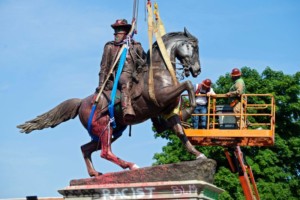
The statue of Confederate General J.E.B. Stuart is removed from Monument Avenue in Richmond, Virginia.” (Photo by Ryan M. Kelly / AFP) (Photo by RYAN M. KELLY/AFP via Getty Images)
(Time.com) When we look back on 2020, the emblematic photos of the year will undoubtedly include images of crowds gathered around toppled, spray-painted statues. The indictment of these monuments has focused the country’s attention on how the history of slavery in the United States casts a long shadow that stretches all the way from the Middle Passage and Jim Crow to the protracted record of police violence against African Americans that led to the Black Lives Matter movement in the first place.
The histories of slavery and racism in the United States have never been more pertinent. This is also the case for the comparatively understudied history of race as a concept, without which it is impossible to understand how Europeans and their colonial “descendants” in the United States engineered the most complete and enduring dehumanization of a people in history. (more)
Cracker Barrell National Battle of the Bands creates HBCUs Band Together Scholarship & Virtual Battle Series
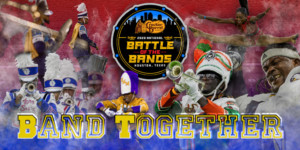 (Harris County -Houston Sports Authority) In an effort to continue its support of Historically Black Colleges and Universities during the global pandemic, the Cracker Barrel National Battle of the Bands is launching the HBCUs Band Together scholarship initiative and a new fall Virtual Battles Series.
(Harris County -Houston Sports Authority) In an effort to continue its support of Historically Black Colleges and Universities during the global pandemic, the Cracker Barrel National Battle of the Bands is launching the HBCUs Band Together scholarship initiative and a new fall Virtual Battles Series.
The initiative, announced by Webber Marketing & Consulting, LLC, and the Harris County -Houston Sports Authority, is designed to bring together those who wish to support HBCUs, HBCU marching bands and their band members during the COVID-19 crisis. The campaign will feature images, performance clips and virtual conversations.
“With the impact of COVID-19 changing the landscape of sporting events and other major public gatherings where HBCU bands would be invited to perform and showcase their talents – HBCUs Band Together will focus on its immediate goals of raising aid for COVID-19 test kits for all HBCU students for Fall 2020 and creating another source of funding to assist HBCU bands with scholarship dollars for its students and programs,” said Derek Webber, CEO of Webber Marketing & Consulting, LLC and Creator of the National Battle of the Bands.
In the fall, the NBOTB team will roll out the Virtual Battles Series, which will feature matchups between HBCU marching bands. The pay-per-view format will allow alumni and fans to watch and interact with their favorite band’s performance from their laptop, tablet or mobile device and will be hosted on www.NationalBattleoftheBands.com.
“With everything going on, including many of the HBCU homecomings being canceled, we wanted to create a virtual atmosphere that generates the feelings of homecoming in the homes of those who love and support these bands and the talented band members,” Webber said.
The Sports Authority applauds the initiatives, which opens up more opportunities to help give back to the community and bring awareness to HBCUs during these difficult times.
To make a donation to HBCU’s Band Together, visit www.hbcusbandtogether.org. (more)
TIPHC Bookshelf
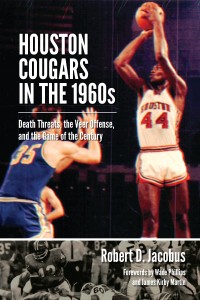 Published scholarship on black history in Texas is growing and we’d like to share with you some suggested readings, both current and past, from some of the preeminent history scholars in Texas and beyond. We invite you to take a look at our bookshelf page – including a featured selection – and check back as the list grows. A different selection will be featured each week. We welcome suggestions and reviews. This week, we offer, “Houston Cougars in the 1960s — Death Threats, the Veer Offense, and the Game of the Century,” by Robert Jacobus.
Published scholarship on black history in Texas is growing and we’d like to share with you some suggested readings, both current and past, from some of the preeminent history scholars in Texas and beyond. We invite you to take a look at our bookshelf page – including a featured selection – and check back as the list grows. A different selection will be featured each week. We welcome suggestions and reviews. This week, we offer, “Houston Cougars in the 1960s — Death Threats, the Veer Offense, and the Game of the Century,” by Robert Jacobus.
On January 20, 1968, the University of Houston Cougars upset the UCLA Bruins, ending a 47-game winning streak. Billed as the “Game of the Century,” the defeat of the UCLA hoopsters was witnessed by 52,693 fans and a national television audience—the first-ever regular-season game broadcast nationally.
But the game would never have happened if Houston coach Guy Lewis had not recruited two young black men from Louisiana in 1964: Don Chaney and Elvin Hayes. Despite facing hostility both at home and on the road, Chaney and Hayes led the Cougars basketball team to 32 straight victories.
Similarly in Cougar football, coach Bill Yeoman recruited Warren McVea in 1964, and by 1967 McVea had helped the Houston gridiron program lead the nation in total offense.
Houston Cougars in the 1960s features the first-person accounts of the players, the coaches, and others involved in the integration of collegiate athletics in Houston, telling the gripping story of the visionary coaches, the courageous athletes, and the committed supporters who blazed a trail not only for athletic success but also for racial equality in 1960s Houston.
This Week in Texas Black History
July 28
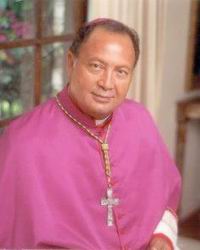
On this date in 2000, Curtis John Guillory was named Bishop of the Catholic Diocese of Beaumont, becoming fifth bishop of the 34-year-old Roman Catholic Diocese of Beaumont and the first African American Catholic bishop in Texas. Guillory was born in Mallet, Louisiana on Sept. 1, 1943, as the oldest of 16 children. He attended Catholic school and entered the seminary of the Society of the Divine Word in Bay St. Louis, Miss., in 1960. He was ordained a priest of the Divine Word Dec. 16, 1972, and he was ordained as the 12th African American bishop in the United States Feb. 19, 1988.
July 28
Joseph Edwin Wiley, Sr., thought to be the first Black lawyer in Dallas, was born in Albany, Ohio on this day in 1862. Wiley was also an urban industrialist, real estate investor, and general manager of the New Century Cotton Mill of Dallas. His parents, Israel and Susan Wiley, were farmers from Virginia who came to Ohio sometime between 1855 and 1857. Joseph, who was the fourth of eight children and the oldest surviving son, worked in the fields with his father before enrolling at Oberlin College in 1882. From Oberlin he went on to attend Union College of Law in Chicago, which is now Northwestern University School of Law. In 1885, Wiley graduated from Union College and moved to Dallas. For many years it was believed that Wiley was the first black lawyer in Dallas, but this honor should be reserved for S. H. Scott, who briefly practiced in the city in 1881. However, Wiley still holds the distinction of being the first formally-educated black lawyer in Texas.
July 30
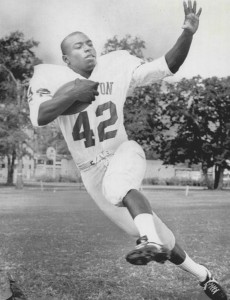
On this day in 1946 Warren McVea was born in San Antonio. McVea was arguably the top high school running back in the country when he graduated from Brackenridge High School in 1964. During his senior season, McVea scored 315 points and 46 touchdowns, which was a single-season record for the University Interscholastic League’s largest school classification (4A). In college, “Wondrous Warren” was the first black player for the University of Houston program and the first to receive a scholarship to a major previously all-white college in Texas. Professionally, he was a fourth-round pick by the Cincinnati Bengals and was a member of the Kansas City Chiefs when they won Super Bowl IV, defeating the Minnesota Vikings. He was inducted into the San Antonio Sports Hall of Fame in 2003 and the UH Hall of Honor in 2004.
Aug. 1
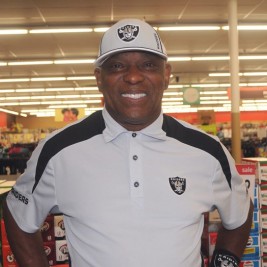
On this day in 1948, football and track star Clifford Branch was born in Houston. At Evan E. Worthing High School, Branch was All-District in football (1966), but was also the first schoolboy in Texas history to run the 100-yard dash in 9.3 seconds. He was the state champion in the 100-yard dash (1965) and the 220-yard dash (1966). He attended the University of Colorado where he was an All-American wide receiver (1971) and the 1972 NCAA 100-meter champion with a record time of 10.0. Branch was selected in the fourth round of the National Football League Draft by the Oakland Raiders and played his entire pro career (1972-85) with the team, including three Super Bowl titles. He was named first-team All-Pro three times and finished his career with 501 receptions for 8,685 yards and 67 touchdowns. He is a member of the Prairie View Interscholastic League Hall of Fame.
Aug. 1
Milton M. Holland, one of sixteen black soldiers to receive the Congressional Medal of Honor during the Civil War, and the first African American recipient from Texas, was born probably in Austin, on this day in 1844. Holland was the slave and perhaps the son of Bird Holland, who later became Texas secretary of state. Bird Holland freed Milton and his two brothers, James and William H. Holland, and sent them to school in Ohio during the late 1850s. Holland attended the Albany Enterprise Academy, a school operated by free African Americans. Holland, too young to enlist into the United States Army at the start of the Civil War, worked as a shoemaker for the quartermaster department of the army until he was allowed to enlist. In June 1863 in Athens, Ohio, he joined the Fifth United States Colored Troops, commanded by Gen. Benjamin F. Butler. Holland rose to the rank of regimental sergeant major. During the battle of Chaffin’s Farm and New Market Heights, Virginia, all of the white commanding officers either were killed or wounded during the engagements between September 28 and 30, 1864. Holland assumed command and led the black troops in battle, routing the enemy and leading his troops to victory. For leading the charge, during which he was wounded, he received the Congressional Medal of Honor on April 6, 1865, for his bravery. Holland was promoted to captain, but the War Department refused the commission on grounds of his race.
Blog: Ron Goodwin, Ph.D., author, PVAMU history professor
Ron Goodwin is an assistant professor of history at Prairie View A&M University. Even though he was a military “brat,” he still considers San Antonio home. Like his father and brother, Ron joined the U.S. Air Force and while enlisted received his undergraduate degree from Texas Lutheran University in Seguin, Texas. After his honorable discharge, he completed graduate degrees from Texas Southern University. Goodwin’s book, Blacks in Houston, is a pictorial history of Houston’s black community. His most recent book, Remembering the Days of Sorrow, examines the institution of slavery in Texas from the perspective of the New Deal’s Slave Narratives.
Recent Posts
Protect and Serve (Control)
The black community’s relationship with law and order has been tenuous, at best, for generations. Sadly, I believe our society has lost sight of the original purpose of law enforcement and how that purpose has been altered in our current societal and global environments. What’s even worse, if that’s possible, is that some groups in our society still embrace the archaic and erroneous ideology that people of color are genetically inferior to those of… (more)
More Uncomfortable Truths
In February 2020, I was asked to contribute an opinion piece for the PVAMU website. I submitted an essay describing what I called an Uncomfortable Truth of Black History Month. That “truth” focused on the black community’s continual efforts to prove it is worthy of recognition as contributors to American society. Even more so, I argued, it is time the black community finally acknowledges that the subliminal need for acceptance is based on the… (more)
Submissions wanted
Historians, scholars, students, lend us your…writings. Help us produce the most comprehensive documentation ever undertaken for the African American experience in Texas. We encourage you to contribute items about people, places, events, issues, politics/legislation, sports, entertainment, religion, etc., as general entries or essays. Our documentation is wide-ranging and diverse, and you may research and write about the subject of your interest or, to start, please consult our list of suggested biographical entries and see submission guidelines. However, all topics must be approved by TIPHC editors before beginning your research/writing.
We welcome your questions or comments. Please contact Michael Hurd, Director of TIPHC, at mdhurd@pvamu.edu.

